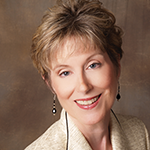Along those lines, Dr. Schousboe’s future investigations will focus on practice-based and health services research, “which is really designed to look at outcomes, costs, and clinical practice, and how those things can be improved through changes in care practice,” he says. His PhD experience helped prepare him for this kind of work at a more rigorous level, he notes. He also believes that his PhD work gave him a new way to look at his patients. “I think differently now when I see patients. It’s given me a broader appreciation of the entire social context of their experience,” he says.
A typical day for Dr. Schousboe is split between research and seeing patients. “I’ll start the morning by looking through electronic records of folks I’ll be seeing,” he says. “I’ll usually be able to visit with nine patients in a morning, including consults and rechecks. My office always looks like ‘organized chaos’ with piles on my desk, but my eyes always see past that to my laptop since we’re so centered around electronic medical records. Toting my laptop between patient rooms, I’m always ready to show the patient the X-rays right on the computer or let them see a spreadsheet—not from last week’s piece of paper but letting them in on what’s been happening for as much as two years back.”
Change in Attitude
Dr. Schousboe’s philosophy today is a matter of W.I.T.—Whatever It Takes. “I have to attend to patients’ needs from their perspective even if it makes me run late,” he says. “I can be 40 minutes behind by the end of the day, but it saves time because the patients appreciate that they’re getting a complete appointment and won’t have to come back if it’s not necessary. I made the decision that, yes, we have time constraints in appointments, but you can’t treat [a patient] like they’re a number.”
Dr. Schousboe says that the biggest lesson he gained from his extra time in academia was a sense of perspective: “I feel much less frustration if a patient doesn’t want to follow my advice—I’ve learned an appreciation for why that may make sense and why it should be respected. There isn’t always a right or wrong answer. For example, if I prescribe medicine that now creates disruption in that person’s life, I may do more harm than good.”
As he prepares for a life without the “disruption” of education, Dr. Schousboe will have a new challenge: what to do with the extra time on his hands. “It’s an interesting idea, not being a student anymore,” he says. “But a doctor never stops learning. Not if he’s good at what he does.”
